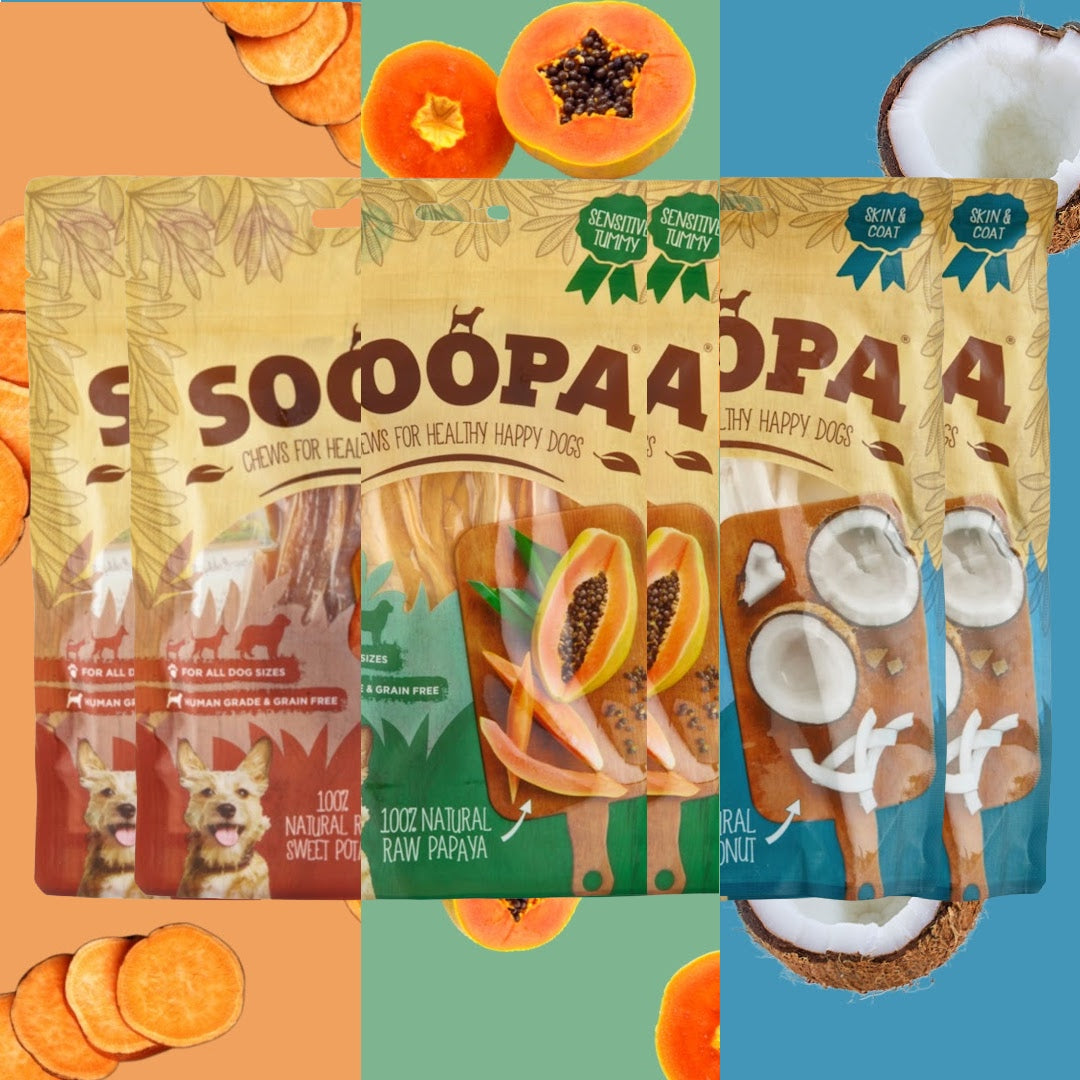Can Diabetic Dogs Have Treats? Vet Advice Every Pet Owner Should Know
Living with a diabetic dog doesn’t mean cutting out all the joy, and yes, that includes treats. But the real question pet owners ask is: can diabetic dogs have treats safely?
The short answer? Yes - with care, planning, and vet approval.
Let’s break down the science, expert advice, and safe options you can feel confident about giving your pup.
What Is Canine Diabetes? (Quick Refresher)
Canine diabetes, like human Type 1 and Type 2, is a chronic condition where the body either doesn’t produce insulin or can’t effectively use it. Left unmanaged, it leads to dangerous blood sugar levels, weight changes, lethargy, and even organ damage.
Managing diabetes in dogs relies heavily on:
-
Insulin injections
-
Timed meals
-
Controlled carbohydrate intake
-
Vet-monitored exercise
So where do treats for diabetic dogs fit in?
✅ Can Diabetic Dogs Have Treats? What Vets Say
According to veterinary experts including the American Kennel Club (AKC) and PetMD, diabetic dogs can have treats - but only certain types, and in moderation.
Here’s what vets recommend:
-
Avoid treats high in sugar, molasses, honey, or syrup.
-
Steer clear of white flour and simple carbs.
-
Opt for low-glycemic, high-fiber, natural ingredients.
🐾 Vet-Approved Treat Traits:
| Safe | Avoid |
|---|---|
| Sweet potato (in moderation) | Biscuits with added sugars |
| Green beans, kale, zucchini | Baked goods with flour/sugar |
| Lean meats (freeze-dried chicken, turkey) | Commercial jerky with additives |
| Apples (no seeds), blueberries | Dried fruit with sugar coating |
Let Soopa Make Your Life Easier
We know how tricky it is finding safe treats for diabetic dogs, so we've done the work for you.
That’s why we created the UK’s No.1 vet-approved, low-fat, natural treat range just for them.
Browse Our Soopa Pets Diabetic Dog Treats Collection

Shop Our Soopa Chews For Dogs With Diabetes
Made with juicy papaya, sweet potato & coconut, Soopa Chews are gently air-dried to lock in natural goodness. They're human-grade, vegan, and 100% natural, perfect for dogs with diabetes.

How to Safely Add Treats to a Diabetic Dog’s Diet
Here’s a simple vet-informed framework to follow:
1. Talk to Your Vet First
Always check with your vet before introducing new treats - even if they’re labelled “diabetic-friendly.” Thankfully, Our Soopa dog treats are vet-approved & safe for dogs with diabetes.
2. Time Treats Carefully
Offer treats after insulin injections and meals, not between. This helps stabilize glucose spikes.
3. Use Treats for Training or Rewards
Limit quantity. Treats should make up less than 10% of daily caloric intake.
4. Track Blood Glucose (If Advised by Vet)
If your dog’s diabetes is advanced, your vet may recommend home glucose testing. Monitor how new treats affect levels.
How to Read a Dog Treat Label (For Diabetic Dogs)
When browsing the shelves, look for:
-
✅ Low Glycemic Index ingredients
-
✅ Whole vegetables like kale, spinach, or pumpkin
-
✅ Lean protein like salmon, turkey, or chicken
-
❌ No corn, wheat, or soy fillers
-
❌ No added sugar, syrups, or molasses
-
❌ No artificial colors or preservatives
FAQs: Can Diabetic Dogs Have Treats?
Q1: What treats are safe for diabetic dogs?
Treats with low-GI veggies (like kale), lean proteins, or single-ingredient chews are best. Soopa’s treats are a great example.
Q2: How many treats can a diabetic dog have per day?
Treats should be less than 10% of their total daily calories. Always consult your vet for exact amounts.
Q3: Can I make homemade diabetic dog treats?
Yes! Simple recipes using steamed kale, pumpkin, and oats can be blended and baked into safe treats.
Q4: Do dental sticks work for diabetic dogs?
As long as they’re low in sugar and carbs — yes. Dental sticks like Soopa’s are a vet-approved, safe way to reward your pup while helping their teeth.
Final Thoughts: Yes, Diabetic Dogs Can Have Treats - If You Choose Right
So, can diabetic dogs have treats?
Yes, but not just any treat. Look for natural, low-fat, vet-approved options that are gentle on blood sugar and digestive systems.
Start with small portions, time them well, and always read the label.
👉 Ready to try something your dog will love and feel good about?


Add a comment